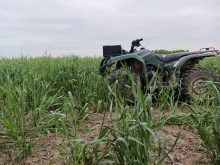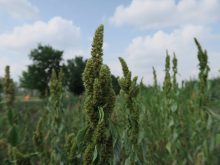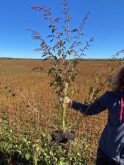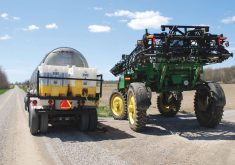Reports that Bayer will no longer make glyphosate have caused fears that the world’s most popular herbicide could be less available to farmers.
However, there are other generic manufacturers of the herbicide around the world, and Ontario’s foremost expert on treating weeds says he doesn’t foresee the use of glyphosate coming to an end in Ontario any time soon.
Why it matters: Glyphosate forms the basis of low tillage farming systems, which reduces the amount of carbon needed to produce crops. It’s also an effective and less expensive option for farmers.
Read Also
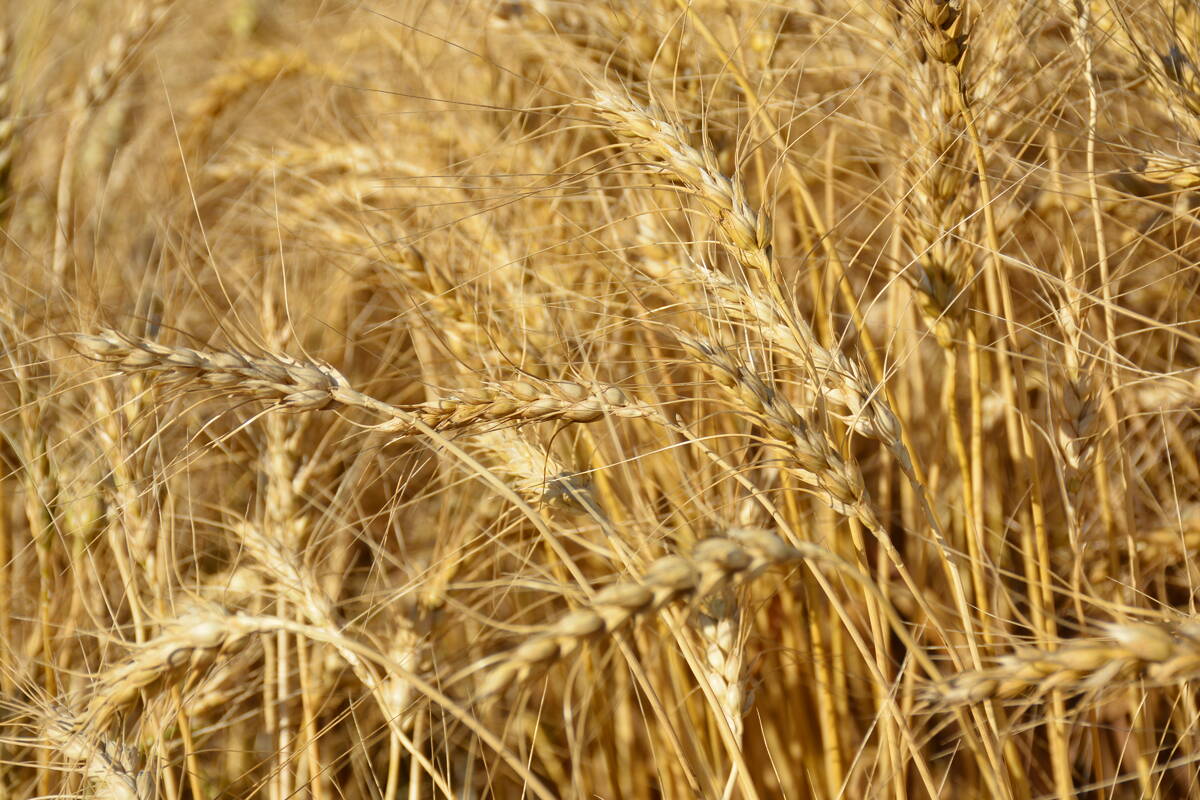
Scientists discover a gene that could triple wheat production
This discovery could give breeders a powerful new tool to boost yields without needing more land, water, or fertilizer.
Peter Sikkema says glyphosate’s high effectiveness as a herbicide and low cost continue to make it a financially sound choice for farmers looking for maximum return on investment. He’s a professor emeritus and adjunct professor at the University of Guelph’s Ridgetown campus.
“I would suggest to you that glyphosate is the most amazing herbicide discovered by man. I think among weed scientists, there would be a general consensus that glyphosate has had a bigger impact on agriculture than any of the others,” he said. “It has activity on grass and broadleaf weeds. It has activity on annual, biannual and perennial weeds. It has activity on seedling and mature weeds.”
Glyphosate first came to the market in Ontario in 1978 following its initial introduction in 1974. It quickly became the herbicide of choice for farmers across Eastern Canada looking for a cost-effective way to control weeds.
In Ontario, there are no definitive numbers to determine crop yield losses and associated monetary loss, according to a report published in Cambridge University Press and co-authored by Sikkema. Earlier studies, however, showed that uncontrolled weeds that aren’t glyphosate-resistant could cost crop growers in Ontario $1.067 billion for corn, $581 million for soybeans, $367 million for wheat and $85 million for dry beans.
Sikkema noted that because of the broad-spectrum control, at a relatively low cost, the loss of glyphosate would have a significant economic impact on crop production in Ontario, adding that if farmers were forced to use alternative weed management tactics, including alternative herbicides, the cost of weed management would go up.
Glyphosate, driven by a large increase over the past 30 years in use on herbicide resistant crops, has developed resistance, so farmers are having to make choices other than glyphosate on some of their crops already.
There are six glyphosate-resistant weeds in Eastern Canada today, including giant ragweed, common ragweed, Canada fleabane, waterhemp, bird’s rape mustard and Italian ryegrass. Sikkema said that farmers are integrating alternative herbicides into their weed management programs to control glyphosate-resistant biotypes.
“I think the more diverse their crop rotation, the more opportunities they have to use alternate weed management tactics. This can include planting additional crops in the rotation, seeding crops in more narrow rows to increase crop competitiveness and the use of cover crops,” he said, adding that in Western Canada some farmers have purchased combines with harvest weed control. These combines have a mill that grinds weed seeds, rendering them not viable. He added that farmers can employ many different weed management tactics on their farms in conjunction with herbicides.
“I think herbicides will remain a component of a long-term, diversified weed management program. But there are other things that farmers can do to increase the competitiveness of the crop, such that the crop will aid in the suppression of weeds,” he said, noting using tillage at strategic points in a diversified crop rotation is also effective.
“All of those things can be used to complement all the other weed management tactics that a farmer would use, including the use of herbicides.”
Sikkema believes that the use of glyphosate will continue in the future, in spite of the evolution of glyphosate-resistant weeds.
“The reason why farmers are going to continue to use it is that it is a relatively low-cost herbicide. And let’s say a farmer has 10 different weed species on his farm, and one of them has evolved resistance to glyphosate. Glyphosate is still going to control those other nine weeds on his farm, and therefore, they’re still going to use glyphosate, and then they will add things to glyphosate to control the resistant biotypes.”
Additionally, he said, he believes farmers will diversify their weed management programs to reduce reliance on glyphosate.
That can include increasing the use of soil-applied herbicides along with alternative post-emergent herbicides where it makes sense, especially if the glyphosate alternative provides control of the weeds that are a problem on that particular farm.
If glyphosate does leave the Ontario market, the cost to change course will be significant for farmers.
A study published by the University of Maryland Extension, which looked at vinegar as an alternative, found that though it was effective, the cost to switch was more expensive per square foot than glyphosate. Vinegar costs an average of $360 to $2,400 per mile for roadside weed control, compared to around $20 per mile for glyphosate.
“When glyphosate became affordable, it replaced a significant amount of tillage when used as a preplant burndown or a late fall burndown to achieve the same effect of prepping the field for crops. Producers will swing back to the use of tillage to fill that void. Starting the planting season with a clean slate is a good strategy to achieve high-yielding crops,” said Deb Campbell, president of Agronomy Advantage Inc., adding that losing glyphosate will make Roundup Ready or glyphosate-tolerant crops redundant. “Those traits in corn, soybeans and canola will have no value without the ability to spray glyphosate over the top of these crops for weed control.”
Campbell believes that tillage and conventional chemistries cost more and will require more equipment, fuel and labour, adding that crop margins are tight and additional costs would put a major strain on crop budgets.
As more plants become resistant to glyphosate in Ontario, she says producers have had to add other conventional chemistries to their spray programs to achieve weed control, such as Sencor and newer chemistries like Zidua.
“These older products really shine for Canada fleabane or waterhemp control not just because they are effective but because they offer residual weed control for part of the season. Glyphosate still works on the majority of weed species in the majority of environmental conditions and growth stages. It’s easy to work with and has good results,” she said.
Switching back to an all-conventional spray program, she believes, will change how producers spray since glyphosate has been so reliable there hasn’t been as much focus on rates, weed size, time of day and surfactants.
“Those are all important factors when using solely conventional chemistries to have excellent weed control,” she said.
If farmers are forced to look for alternative crop varieties due to resistance, Campbell feels there are still many conventional hybrids and conventional soybean genetics on the market today that can fill this gap.
“The IP soybean market in Ontario is still quite strong and holds significant acres. However, in recent years genetic development and glyphosate tolerance are part of the same package. Most of the highest-yielding genetics are glyphosate tolerant since that is where the breeding focus has been. It’s likely that producers would still purchase the best genetic package regardless of glyphosate tolerance and spray with conventional chemistries. Yield is still the number one goal,” she said.
Additionally, she said, farmers still have the use of newer weed control traits like Liberty, Xtend and Enlist systems.
“I’m sure there will be more launches in years to come. I think we would find new ways to use these traits in the absence of glyphosate,” she said.






